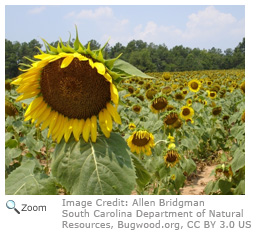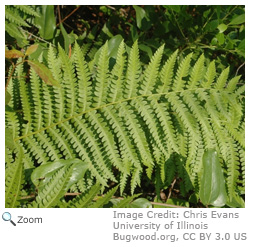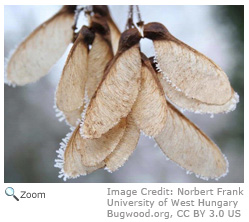Tracheophytes |
Tracheophytes are plants with roots, stems and leaves. Some tracheophytes reproduce with seeds and some reproduce with spores. |
Vascular Transport Unlike
bryophytes, tracheophytes have tissues called xylem that transport water and food to tissues called phloem. Together the xylem and the phloem are called vascular tissue. Vascular plants have roots, stems and leaves. Adapted for Growth Vascular
plants have some adaptations that help them survive. They are covered
with a waxy layer, or cuticle that holds in water. They also have stomata, or pores that help them take in and let out gasses like carbon dioxide and oxygen. Vascular
plants have some adaptations that help them survive. They are covered
with a waxy layer, or cuticle that holds in water. They also have stomata, or pores that help them take in and let out gasses like carbon dioxide and oxygen. Their roots take up water and nutrients from the soil and anchor them to the soil. Stems move water and nutrients to the plant's leaves and the leaves capture the sunlight the plant needs for photosynthesis.
|
To Seed or Not to SeedThere are two types of vascular plants: cryptogams or nonseed plants and phanerogams or plants with seeds.Doing More With Spores Vascular plants like ferns and horsetails don't have seeds, they reproduce with spores! These plants have two stages, the gametophyte stage and the sporophyte stage. Vascular plants like ferns and horsetails don't have seeds, they reproduce with spores! These plants have two stages, the gametophyte stage and the sporophyte stage. The sporophyte stage is what you are probably most familiar with. This is when the fern has fronds with spores on the underside. The spores are released and fall to the ground where they grow into something called a prothallus. This is the gametophyte stage. The prothallus produces a sperm and an egg cell. The sperm fertilizes the egg, and the fertilized egg grows into a new fern which will produce spores and start the process all over again! Planting a Seed One of the major differences between nonseed plants (cryptogams) and seed plants (phanerogams) are the seeds! Each seed has food-storage tissue or sporophyte and a hard protective shell or seed coat. Seeds protect new growth better than spores. They also can be spread over a greater distance than spores when animals like birds and squirrels carry them from place to place. One of the major differences between nonseed plants (cryptogams) and seed plants (phanerogams) are the seeds! Each seed has food-storage tissue or sporophyte and a hard protective shell or seed coat. Seeds protect new growth better than spores. They also can be spread over a greater distance than spores when animals like birds and squirrels carry them from place to place.
|
